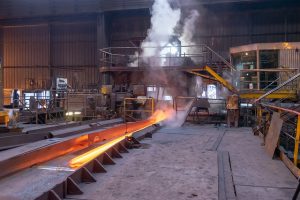
Stainless steel is one of the world’s most common alloys. Consisting of iron, carbon and chromium, it’s prized for its superior level of protection against corrosion. Even when exposed to moisture, stainless steel typically won’t corrode. Since it’s not a pure metal, though, manufacturing stainless steel is a methodical, multi-step process. To learn more about stainless steel and how it’s made, keep reading.
The Basics of Stainless Steel
By definition, stainless steel is a group of alloys consisting primarily of iron mixed with lesser amounts of carbon and chromium. It was invented around the turn of the 19th century. Throughout the early and mid-1800s, several companies began making stainless steel. Today, stainless steel has become a common and invaluable material. Statistics show that over 52 million tons of the popular alloy are produced globally in any given year.
How Stainless Steel Is Made
While there are different types of stainless steel, they are all made in relatively the same way. Steelmakers start by heating the raw materials in a furnace. There are electric-powered furnaces as well as gas-powered furnaces. Regardless, as the furnace heats up, the raw materials will turn from a solid state to a liquid state.
After smelting the raw materials, steelmakers will extract the excess carbon from it. Carbon is a defining characteristic of stainless steel. All types of stainless steel have carbon. With that said, stainless steel requires a specific amount of carbon so that it’s able to withstand moisture without rusting or corroding. This is why steelmakers remove excess carbon when making stainless steel. The removal of carbon typically involves the use of a vacuum chamber that forces the carbon to rise to the surface.
Once the excess carbon has been removed, steelmakers mix the raw materials. Mixing is important because it ensures the equal distribution of all the raw materials. As previously mentioned, stainless steel consists of iron, carbon and chromium. If not mixed, concentrations of these materials may be higher in some areas of the stainless steel than others. Steelmakers can prevent this from happening by mixing the raw materials during the production of stainless steel.
As the molten and mixed raw materials begin to cool, they’ll harden. Some steelmakers may perform forming processes as the raw materials cool. Rolling, for instance, is often used to make stainless steel. Once formed, the stainless steel is ready to be packaged, sold or used in manufacturing-related applications.
No tags for this post.